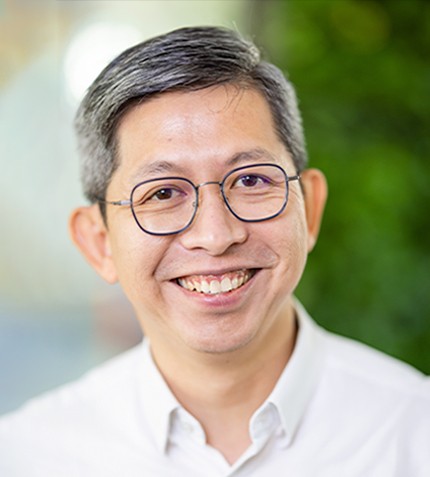
"By providing recycled PLA, we help our customers design their products for recycling, while significantly lowering the carbon footprint of the end product."
Chow Pin Tan
VP ASIA, TOTALENERGIES CORBION
TotalEnergies Corbion has introduced chemically recycled PLA to the market. Could you elaborate?
TotalEnergies Corbion has been a pioneer in polylactic acid, or PLA as is more commonly known. In addition to have developed high heat PLA in the past, we now can also provide PLA with a recycled content of up to 30%. Luminy® PLA, our product brand, is 100% biobased, and it can now be used over and over keeping the same properties as virgin PLA.
One of the most efficient ways to source used PLA is partnering with customers. The used PLA is chemically recycled at our plant in Thailand through a hydrolysis process that has a significantly higher yield and lower energy requirement compared to the pyrolysis process used for traditional polymers. As the waste is transformed back to the monomer level, the resulting PLA produced will have same characteristic and performance as the original PLA. The recycling facility is part of the chemical reactor where we produce lactic acid, located in Rayong, Thailand.
By providing recycled PLA, we help our customers design their products for recycling, while significantly lowering the carbon footprint of the end product.
TotalEnergies Corbion has recently undergone a life cycle assessment of its rPLA. Could you summarize the findings?
The most important finding is that switching from a traditional polyolefin to PLA, such as PET, can result in GHG savings of up to 75%. According to our life cycle assessment (LCA) study, for each kg of PLA produced, we generate close to 0.5 kg of global warming gases, mostly CO2. However, the equivalent for 1 kg of PET is 2.2kg, which is nearly 4.4 times more. For recycled PLA with 30% PCR content, the carbon footprint reduces by another 30%, to approximately 0.3kg, seven times less than a virgin PET.
The LCA is data-based and peer-reviewed, allowing our customers to understand the impact and benefit of our products. We also aim to use the LCA study to encourage more science-based dialogues rather than a reliance on sentiment-driven decisions.
How has the PLA Luminy® portfolio evolved in terms of the range of applications?
PLA was originally primarily used in consumer goods applications such as food packaging. That still makes up approximately 50% of its current use. However, we are actively pursuing growth in textile and durable applications, for example in the automobile and electronics industries. And over the last few years, we have seen increasing uptake in these areas.
One of the key drivers of PLA adoption is a regulatory change. Where there is ban of non-biodegradable plastics, for instance, customers look for bioplastics such as PLA, PHA and PBAT as alternatives. Meanwhile, we have customers who are solely driven by a desire to reduce their emissions. Finally, there are also a segment of users that choose PLA for better performance: it is very suitable as a filament for 3D printing, for example.
We are constantly working with our partners to discover new applications where PLA can replace traditional fossil-based plastics. We have only just started!
How do you anticipate the uptake of PLA in Southeast Asia?
Bioplastics, which include PBAT, PHA, PBS and PLA, account for around 2.2 million t, just over 0.5% of current global plastic production globally. PLA accounts for 400,000 t, just 0.1% of the total market. This capacity has doubled from five years ago and is expected to double again in the next three to five years. There is, therefore, immense potential for growth.
Do you believe regulation in Southeast Asia will become more stringent on plastic use in the coming years?
Regulations in the region are fragmented, with each country having its own sustainability priorities and challenges. Singapore is one of the few countries in the region to have started imposing a carbon tax, for example, as well as putting a fee on plastic bags.
Regulatory implementation also varies. It is relatively easier for a country like Singapore to enforce regulations in a uniform way than for a geographically diverse country. However, in general, across the region and the world, we are seeing a tightening of regulations, particularly around single use plastics and carbon reporting. And it is trend we expect to grow.











